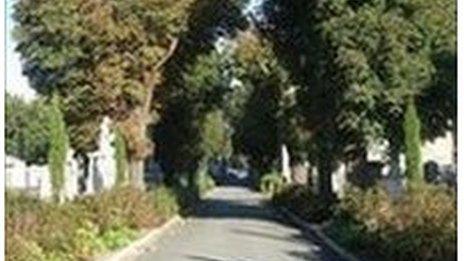Tuam babies: Babies born out of wedlock treated as 'sub-species' says Enda Kenny
- Published
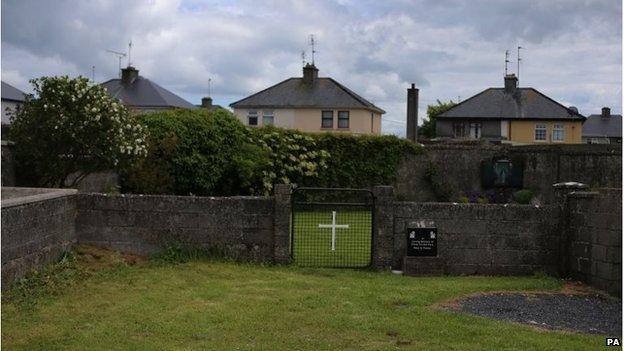
People initially thought the grave in Tuam was for remains of those who died in the famine
Babies of unmarried parents were treated as "an inferior sub-species" for decades in the Republic of Ireland, Enda Kenny has said.
The Irish prime minister (Taoiseach) was speaking after the announcement of a statutory Commission of Investigation into mother and baby homes.
Among the cases it will investigate are the deaths of almost 800 children at a convent-run home in County Galway.
The remains of some children were found in a concrete tank near the home.
The grave in Tuam was initially thought to date to the 1850s when it was discovered 40 years ago.

Enda Kenny said the inquiry will probe the past rather than apportion blame
Historical records show that 796 children, one as old as nine, died at the home between 1925 and 1961.
The home was run by the Bon Secours nuns between 1925 and 1961.
Mr Kenny said the inquiry will probe the past rather than apportion blame.
He said: "This was Ireland of the 1920s to the 1960s. An Ireland that might be portrayed as a glorious and brilliant past, but in its shadows contained all of these personal cases, where people felt ashamed, felt different, were suppressed, dominated and obviously the question of the treatment in the mother and babies homes is a central part of that."
He added that babies born out of wedlock "were deemed to be an inferior sub-species".
'Time for seeking truth'
Minister for Children Charlie Flanagan earlier told Irish state broadcaster RTÉ that the government will receive an initial report from the investigating team by 30 June.
He said: "I believe that Tuam should not be looked at in isolation because over the last century we have had mother and baby homes right up and down the country
"It's absolutely essential that we establish the facts and in this regard it's a time for sensitivity rather than sensationalism, a time for seeking the truth rather than indulging in speculation."
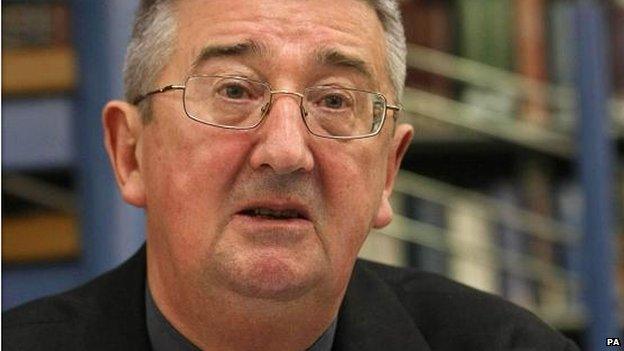
Archbishop of Dublin Diarmuid Martin said a full investigation was needed
The minister said he hoped that the inquiry would examine several issues, including the high mortality rates at mother and baby homes and the burial practices following these deaths.
On Sunday, one of the most senior figures in the Catholic Church in Ireland said a full inquiry was needed.
Archbishop of Dublin Diarmuid Martin said the truth must come out.
The Irish Catholic Bishops Conference, which is currently on the second day of its summer general meeting, said it welcomed the investigation.
In a statement, it said: "We need to find out more about what this period in our social history was really like and to consider the legacy it has left us as a people.
"Above all we need to enable those who were directly affected to receive recognition and appropriate support.
"We therefore welcome the government's intention that the Commission of Investigation will have the necessary legal authority to examine all aspects of life in the homes.
"The investigation should inquire into how these homes were funded and, crucially, how adoptions were organised, processed and followed up."
No burial records
Earlier, it emerged that extensive records from the mother and baby home made no reference to the burial locations of children that died there.
Child and family agency, Tusla, possesses several original ledgers from the home, that record information about discharges and admissions from the home between 1921 and 1961.
The nine ledgers include information on the total numbers of mothers and children in the home for each three months period, deaths and births.
However there are no burial records nor any mention of burial locations in any of the material.
The material was initially passed to Galway County Council in 1961 when the home closed, and then was transferred to the Western Health Board and then the Health Service Executive before Tusla received it at the beginning of the year.
The information contained in the ledgers is strictly confidential but a Tusla spokesperson said they would be made available to any state inquiry.
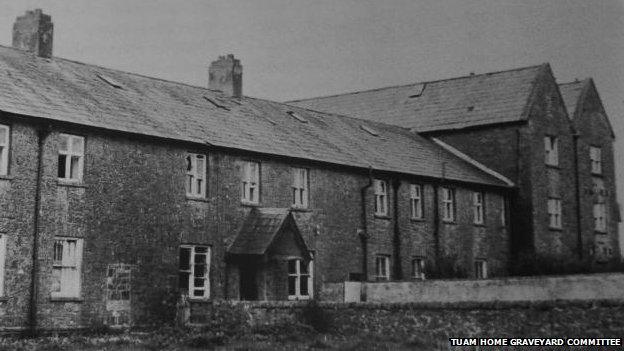
The home was run by nuns between 1925 and 1961
In a statement, Bon Secours said it handed its records to the state after it closed its doors.
The Tuam home was one of 10 institutions to which about 35,000 unmarried pregnant women are thought to have been sent.
- Published8 June 2014
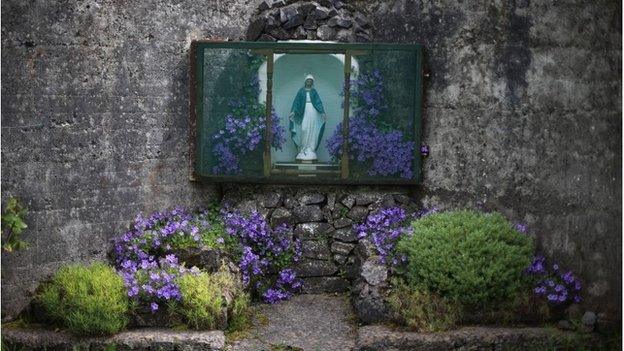
- Published6 June 2014

- Published6 June 2014

- Published5 June 2014

- Published4 June 2014

- Published3 June 2014
- Published3 February 2012
